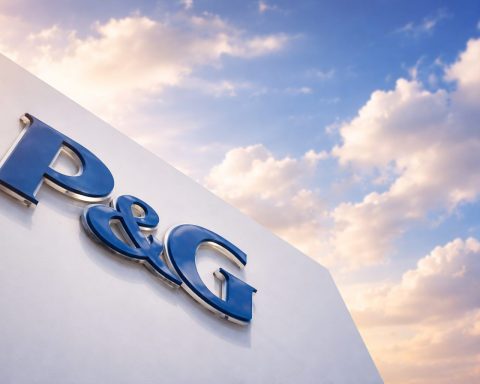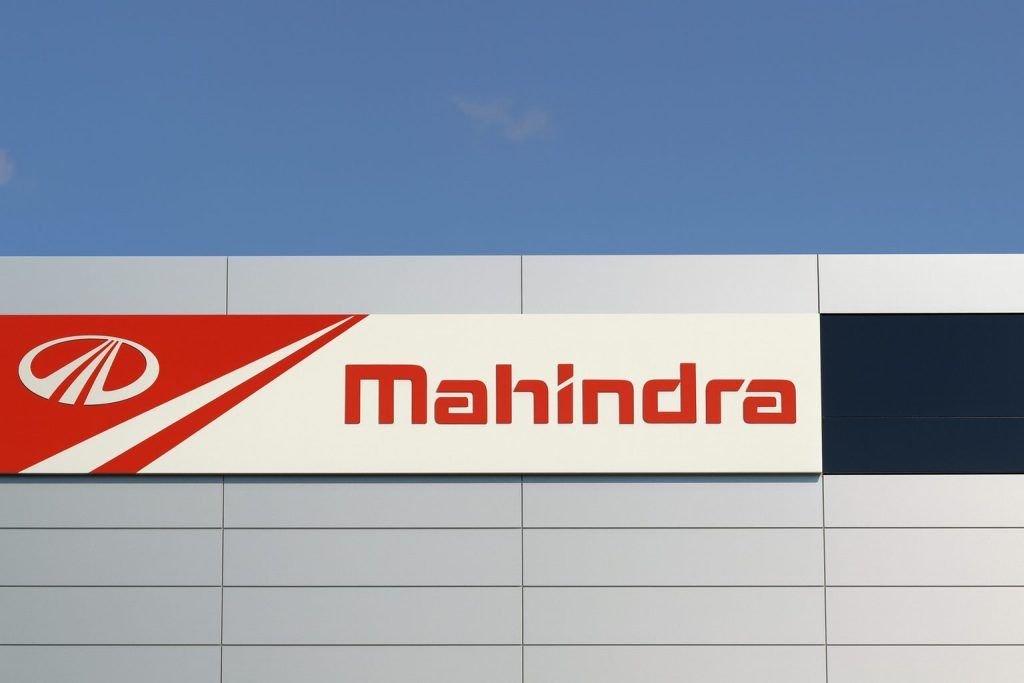Disclaimer: This article is for informational and educational purposes only and is not investment advice. Please do your own research or consult a SEBI‑registered advisor before investing.
1. Where Tata Motors trades today: PV vs CV
After the demerger, Tata Motors investors now track two listed stocks:
- Tata Motors Passenger Vehicles Ltd (TMPV / Tata Motors PV) – houses the domestic PV business and Jaguar Land Rover (JLR) via the group structure.
- Tata Motors Limited (TMCV) – the commercial vehicles (CV) pure‑play entity, listed separately earlier this month.
Tata Motors Passenger Vehicles (TMPV)
As of around 10:20 AM IST on November 28, 2025, Tata Motors Passenger Vehicles shares were trading in the ₹355–356 range on NSE:
- Economic Times’ liveblog cited a last traded price of ₹355.75, with market cap around ₹1.31 lakh crore, volume ~36.6 lakh shares and a P/E distorted by one‑off profit effects. [1]
- LiveMint quoted the stock at ₹355.35, down 0.73% versus the previous close, with an intraday range of ₹355.10–₹359.90 and combined NSE+BSE volume of 3.7 million shares. [2]
Performance has turned distinctly negative:
- 1 week: roughly ‑0.5%. [3]
- 1 month: about ‑12.7%. [4]
- 3 months: nearly ‑47%, and
- 6 months: about ‑50%, effectively halving shareholder value in that period. [5]
LiveMint’s dashboard shows a TTM P/E of ~13 for Tata Motors Passenger Vehicles versus a sector average above 23, a beta ~1.0–2.1 depending on lookback (1.02 on Mint; six‑month beta 2.135 on ET), and a dividend yield around 1.7%. [6]
Tata Motors Limited (TMCV – Commercial Vehicles)
The newly listed Tata Motors Limited (CV) is holding up much better:
- ICICIdirect shows the TMCV stock at ₹356.25 as of 10:09 AM IST today, with a 52‑week range of ₹306.30–₹359.90 and a market cap of about ₹1.31 lakh crore. [7]
This CV stock debuted at roughly a 28% premium to the discovered demerger price in mid‑November and, despite some post‑listing volatility, still trades close to its 52‑week high. [8]
For investors, that means:
- PV stock (TMPV) = high volatility, heavy drawdown, JLR + EV story.
- CV stock (TMCV) = steadier price action, cyclical commercial vehicle exposure, and more “traditional” India infra and freight growth.
2. Today’s key news on Tata Motors (28 November 2025)
2.1 Emkay Global keeps “ADD” on Tata Motors PV, sees 11% upside
In a fresh brokerage roundup published this morning, ETMarkets highlighted Emkay Global’s view on Tata Motors Passenger Vehicles: [9]
- Rating: ADD
- Target price:₹400
- LTP used:₹359
- Implied upside: about 11% from that reference price
The note appears in a list of four stocks that top brokerages believe could deliver 10–28% returns over a longer‑term horizon, placing Tata Motors PV in the “selective but still optimistic” bucket rather than among aggressive high‑beta trades. [10]
This is significant because it comes after the brutal post‑results correction and incorporates the latest JLR margin downgrade and cyberattack disclosures (discussed below). In other words, at least one large sell‑side house is not throwing in the towel on the PV–JLR story yet.
2.2 Liveblog check‑in: weak near‑term returns, high volatility
The Economic Times liveblog for Tata Motors PV paints a picture of a stock stuck in a downtrend with sharp swings: [11]
- Today: down around 0.5–0.7% by mid‑morning.
- Week: return of ‑0.56%.
- Month:‑12.74%.
- Three months: down nearly 47%.
- Six months: around ‑50%.
- Six‑month beta: 2.135 – meaning the stock has been more than twice as volatile as the broader market.
Volumes are healthy – over 1.31 crore shares traded yesterday, with 36–37 lakh shares already changing hands this morning – but they are accompanying price damage, not accumulation. [12]
In short: liquidity is ample, but the trend remains down.
2.3 Nuvama expects Tata Motors PV wholesales to jump 18% in November
While the stock sulks, the fundamental picture on monthly volumes looks healthier. A note summarised in national business wires and regional media today indicates that brokerage Nuvama expects a double‑digit surge across 2‑wheelers, CVs and PVs in November 2025. [13]
For passenger vehicles:
- Overall industry wholesales are forecast to rise about 13% YoY.
- Tata Motors Passenger Vehicles is expected to grow volumes by ~18% YoY to roughly 55,500 units, making it one of the growth leaders alongside Mahindra & Mahindra. [14]
That combination — weak stock, firm volume expectations — is at the heart of today’s Tata Motors puzzle.
2.4 Fresh global context: JLR cyberattack still weighs on UK auto output
A new Reuters report published today shows that the cyberattack at Jaguar Land Rover continues to echo through the UK auto industry: [15]
- UK car production in October fell 23.8% YoY to about 59,000 units, with the JLR incident cited as a key driver.
- JLR, owned by Tata Motors, had to halt output at its UK plants for roughly six weeks and only resumed production in early October.
- The attack has already cost JLR around £196 million in direct exceptional charges, according to earlier company disclosures. [16]
The message for equity holders: operational disruption may be easing, but financial and reputational fallout persists, and macro data is now capturing those effects.
3. The earnings shock that broke the uptrend
Today’s price action and sentiment make more sense against the backdrop of mid‑November results.
3.1 A headline profit surge… masking an underlying loss
On November 14, Tata Motors Passenger Vehicles reported Q2 FY26 results that were, frankly, strange at first glance: [17]
- Consolidated revenue: about ₹72,349 crore, down 13.5% YoY.
- Reported net profit: a huge ₹76,170 crore, up over 2,100% YoY, almost entirely due to a one‑time notional gain of ₹82,616 crore linked to the demerger and revaluation effects.
- Underlying performance (excluding the gain): a loss of ~₹6,368 crore, versus a profit of roughly ₹3,056 crore in the same quarter last year.
So the “mega‑profit” was accounting smoke; the core auto business actually swung to a sizeable loss. [18]
3.2 JLR’s margin guidance cut and cyberattack bill
JLR was hit hard:
- A September cyberattack forced the company to shut down IT systems and halt production for about five weeks across multiple UK plants. [19]
- JLR booked exceptional costs of about £196 million (roughly $258 million) linked directly to the incident. [20]
- EBIT margin guidance for FY26 was slashed from 5–7% to just 0–2%, and the company now expects negative free cash flow of £2.2–2.5 billion instead of earlier breakeven hopes. [21]
- JLR posted a loss after tax of £559 million in the quarter, against a £283 million profit a year earlier. [22]
An in‑depth post‑mortem from cyber‑risk specialists estimates the broader economic damage of the JLR attack at around £1.9 billion to the UK economy, with cascading pain for thousands of suppliers. [23]
Little wonder, then, that Tata Motors PV shares plunged as much as 7% in the days after the results, hitting a seven‑month low and triggering a sustained de‑rating. [24]
4. Strategic shifts: demerger, CV listing and product pipeline
4.1 Demerger and CV listing
The Tata Motors demerger finally played out on the exchanges this month:
- TMPV began trading as a standalone PV–JLR entity in mid‑October.
- The commercial vehicles arm listed on November 12, initially as Tata Motors Commercial Vehicles, now renamed Tata Motors Limited (TMCV). [25]
- The CV stock listed at about a 28% premium to its discovered price and closed its first day nearly 27% higher, before giving up over 5% in the subsequent two sessions – a typical post‑listing cool‑off rather than an outright warning sign, according to market commentary. [26]
The logic of the split is straightforward: unlock value and sharpen strategic focus – PVs and JLR in one story, CVs and infrastructure‑linked cycles in another. Analysts generally agree on the logic, but warn that TMPV now carries concentrated JLR risk on its own balance sheet. [27]
4.2 Product cycle: Sierra relaunch and SUV push
On the domestic PV side, current news flow is more upbeat:
- On November 26, Tata Motors PV shares jumped about 3%, hitting an intraday high near ₹362.80, after the company unveiled the 2025 Sierra SUV, priced under ₹15 lakh in its base variant and offered with three powertrain options. [28]
- Management has said the goal is to push SUVs to over 70% of Tata’s PV sales, up from roughly 65–70% today, with Sierra positioned in the intensely competitive mid‑size SUV space dominated by Hyundai Creta, Kia Seltos and Maruti Grand Vitara. [29]
- In an interview, MD & CEO Shailesh Chandra indicated October retail sales of ~75,352 units, up around 13.5% YoY, and flagged plans to expand coverage from 55% to 80% of the PV market by entering new segments and broadening the product range. [30]
The electric Sierra is expected next financial year, reinforcing Tata’s strategy of using familiar nameplates to lead its EV offensive. [31]
5. EV competition heats up
Tata Motors Passenger Vehicles remains India’s EV market leader, offering six all‑electric models from the entry‑level Tiago EV to SUV offerings like the Harrier EV. [32]
But the moat is narrowing:
- Yesterday, Mahindra & Mahindra launched a seven‑seater electric SUV (XEV 9S) with prices starting around ₹20 lakh, explicitly targeting a segment Reuters describes as “dominated by Tata Motors Passenger Vehicles.” [33]
- Mahindra plans to invest ₹16,000 crore in its electric “Origin” SUV family by FY27 and aims for EVs to contribute at least 20% of its SUV sales by 2027. [34]
Analysts quoted in Business Standard warn that slower‑than‑expected EV adoption, policy uncertainty and intensifying competition from Maruti, Hyundai, Mahindra, MG and BYD could all pressure Tata’s growth trajectory, even though it still enjoys a sizeable first‑mover advantage in Indian EVs. [35]
6. What derivatives and valuations are signalling
6.1 Options market: heavy call buildup at ₹370
A fresh MarketsMojo analysis of derivatives activity, dated November 27 but highly relevant for today’s positioning, shows unusually heavy call option activity in Tata Motors Passenger Vehicles: [36]
- On 27 November, about 2,437 call contracts traded at the ₹370 strike for the 30 December 2025 expiry, with open interest around 6,749 contracts.
- The underlying stock price at the time was roughly ₹358, making ₹370 a slightly out‑of‑the‑money strike.
- The stock was trading above its 5‑day moving average, but below its 20, 50, 100 and 200‑day averages, a classic pattern of a short‑term bounce inside a longer‑term downtrend. [37]
In plain language: traders are speculating on a rebound towards ₹370 into the December expiry, but the broader technical picture still argues for caution.
6.2 Fundamental risk lens from analysts
Business Standard summarises the risk case against Tata Motors PV in three main buckets: [38]
- EV adoption hurdles – consumer worries about charging, battery life and upfront cost, plus the risk that government incentives or charging infrastructure rollout disappoint.
- Policy and cost pressures – upcoming emission norms like BS7, higher content of imported components (semiconductors, battery cells) and supply chain fragility.
- Rising competition – aggressive EV plans from Maruti, Hyundai, Mahindra, MG, BYD and others that may compress margins and erode Tata’s early lead.
At the domestic PV level, revenue climbed from about ₹47,868 crore (FY23) to ₹52,353 crore (FY24) but then slipped to ₹48,445 crore in FY25, while PAT fell to ₹714 crore and EBIT margins hovered near 1%, underscoring how thin profitability still is in the home market. [39]
6.3 Is Tata Motors “cheap” now?
Valuation‑oriented platform Smart‑Investing currently classifies Tata Motors (pre‑split basis) as “under‑valued”: [40]
- It estimates an intrinsic value of about ₹784.5 per share, using the median of three historical models.
- As of November 27, it claims the stock was trading at a ~54% discount to that intrinsic value.
Those numbers are model‑dependent and not a recommendation, but they underscore a key point: after a 50% price collapse in six months, valuation arguments are starting to re‑emerge, even as earnings visibility has worsened.
7. Credit quality: a quiet positive amid the noise
Against this choppy operating backdrop, there was a notable credit milestone this week:
- S&P Global Ratings issued a research update assigning Tata Motors Ltd a ‘BBB’ rating with a stable outlook. [41]
While the full text isn’t easily visible in public snippets, S&P highlights the company’s progress on deleveraging and sustainability metrics – including a sharp rise in renewable‑energy usage – as factors underpinning its investment‑grade profile.
From an equity holder’s perspective, this matters because:
- It lowers funding risk at a time when JLR is staring at negative free cash flow and heavy EV investment. [42]
- It signals that, in the eyes of a major rating agency, Tata Motors’ balance sheet is more resilient than the share price currently suggests.
8. How all of this fits together for Tata Motors stock today
Putting the pieces side by side:
- Price action (today): Tata Motors PV trades near ₹355–356, roughly 0.5–0.7% lower on the day, with the stock down ~50% in six months and ~37% over a year. [43]
- Business momentum (near‑term): Nuvama expects ~18% YoY PV volume growth for November, management is pushing SUVs above 70% of the mix, and the Sierra relaunch plus EV pipeline aim to keep Tata central to India’s mass‑premium PV story. [44]
- Shock factors: A £196 million cyber bill, slashed JLR margins, delayed EV launches, and a massive underlying quarterly loss have jolted investor confidence. [45]
- Competitive pressure: Mahindra’s new seven‑seater EV and broader EV competition show that Tata’s early lead is valuable but not unassailable. [46]
- Market signalling: Heavy call activity at the ₹370 strike hints that derivatives traders are positioning for a bounce, even as cash‑market returns remain deeply negative. [47]
- Balance sheet & credit: An S&P BBB / stable rating and ongoing deleveraging are quiet positives in the background. [48]
For Tata Motors Limited (CV), the story is calmer: the newly listed stock around ₹356 trades close to its 52‑week high, reflecting a cleaner CV‑only narrative tied to India’s capex and freight cycles, with far less JLR and cyberattack baggage priced in. [49]
9. Bottom line for November 28, 2025
On 28 November 2025, Tata Motors is a study in contrasts:
- The PV–JLR stock (TMPV) looks bruised, volatile and unloved, yet enjoys robust domestic demand, a rich product pipeline and support from at least some brokerages and valuation models. [50]
- The CV stock (TMCV) is quietly trading near highs, as if to say, “the trucks will keep rolling regardless.” [51]
Whether today’s price around ₹355–356 on Tata Motors PV ultimately proves a deep‑value entry point or a value trap will depend on just a handful of variables over the next 12–24 months:
- How fast JLR recovers volumes and margins after the cyberattack,
- How aggressively rivals eat into Tata’s EV share, and
- How effectively management converts SUV‑heavy domestic demand into sustainable, post‑one‑off profitability.
References
1. m.economictimes.com, 2. www.livemint.com, 3. m.economictimes.com, 4. m.economictimes.com, 5. m.economictimes.com, 6. www.livemint.com, 7. www.icicidirect.com, 8. www.moneycontrol.com, 9. m.economictimes.com, 10. m.economictimes.com, 11. m.economictimes.com, 12. m.economictimes.com, 13. news.webindia123.com, 14. www.tribuneindia.com, 15. www.reuters.com, 16. www.reuters.com, 17. www.livemint.com, 18. www.livemint.com, 19. www.reuters.com, 20. www.reuters.com, 21. www.reuters.com, 22. www.livemint.com, 23. breached.company, 24. www.reuters.com, 25. www.icicidirect.com, 26. www.moneycontrol.com, 27. www.business-standard.com, 28. m.economictimes.com, 29. www.outlookbusiness.com, 30. www.outlookbusiness.com, 31. www.outlookbusiness.com, 32. www.reuters.com, 33. www.reuters.com, 34. www.reuters.com, 35. www.business-standard.com, 36. www.marketsmojo.com, 37. www.marketsmojo.com, 38. www.business-standard.com, 39. www.business-standard.com, 40. www.smart-investing.in, 41. www.spglobal.com, 42. www.livemint.com, 43. www.livemint.com, 44. www.tribuneindia.com, 45. www.reuters.com, 46. www.reuters.com, 47. www.marketsmojo.com, 48. www.spglobal.com, 49. www.icicidirect.com, 50. m.economictimes.com, 51. www.icicidirect.com







